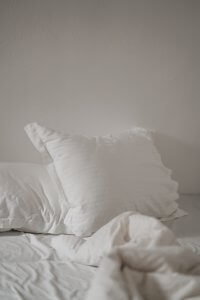A Buyers’ Guide to Mattresses
– by Dr Ray Power (Principal Osteopath) As featured in The West Australian’s ‘Habitat’ pull-out, Friday 21 August 2015.
Along with good nutrition and exercise, sleep is now recognised as an important contributor to good health.
Lack of sleep and poor quality sleep contribute to depression, poor concentration, high blood pressure, and heart disease. It is also associated with mental illness, road deaths, and reduced productivity costing an estimated $5 billion annually (Sleep Health Foundation) to the Australian economy.
Research shows that around 1 in 3 Australians suffer from poor quality sleep and, an important factor that contributes to a good night’s sleep is the right mattress. Considering we spend around one third of our life in bed it is worth doing some research into getting it right.
The right mattress needs to be comfortable whist still being firm enough to provide good postural alignment. Its length should be at least 15cm longer than the tallest person using the bed. This means that you need to try the mattress in store, and it is important that everyone is content with the comfort and support. This may be problematic for some couples who vary significantly in weight. Some mattress models come with differing comfort layers on each side of the bed and this may be a viable option for such couples.
Don’t test the mattresses at the end of a day’s shopping – everything will feel comfortable!
When testing the mattress try rolling over. If it is difficult to turn it may be too soft, if uncomfortable on the hips or shoulders it may be too firm.
Your sleep position is also important when choosing your mattress
- Firm mattress tops are best suited if you sleep mostly on your back or stomach, giving you the proper comfort and support
- Plush layers work best for helping sooth pressure points throughout your body as you sleep
- Pillowtop mattress layers are constructed of material soft enough to let your body sink in and are particularly suited to side sleepers
Make sure the base you have at home is similar to the base in the display room, as a mattress can feel very different on another base.
There are four main types of mattress:
- Continuous or open-coil mattress – often more affordable but less durable than pocket springs. The springs move as one unit so tossing and turning can disturb your partner
$400 to $10,000*
- Memory foam mattress – These mattresses are topped with a layer of memory foam which takes pressure off joints as you sink into the foam. The downside is that it can feel too warm for some
$1500 to $6500*
- Latex foam mattress – Tend to be durable and the materials breathe, so they are a good option for those prone to allergies (except latex!) and dust mites and there is less chance of overheating.
These mattresses have a solid feel and they can be cumbersome to move due to their weight. Cheaper versions can get lumpy after a time.
$1800 to $4900*
- Pocket-sprung mattress – a pocket-sprung mattress has up to 3000 springs sewn into individual fabric pockets. They can be customised to have two sides, of different firmness.
They offer good support by distributing your body weight evenly. They will support two people of two different body weights as the springs are separate. The open-spring construction allows air to circulate. The springs can be customised to different tensions – soft, medium or firm.
They can be heavy to turn and natural materials such as lambs wool can exacerbate allergies.
$1200 to $6400*
* Price range for queen.
What about mattress toppers?
These add a layer of memory foam or extra padding to your existing bed mattress but can be expensive. If you simply want an extra layer of cushioning, an inexpensive topper can add a layer of comfort.
Buying tip
Some mattress companies have a comfort guarantee for several weeks and will swap the mattress if you are not satisfied.